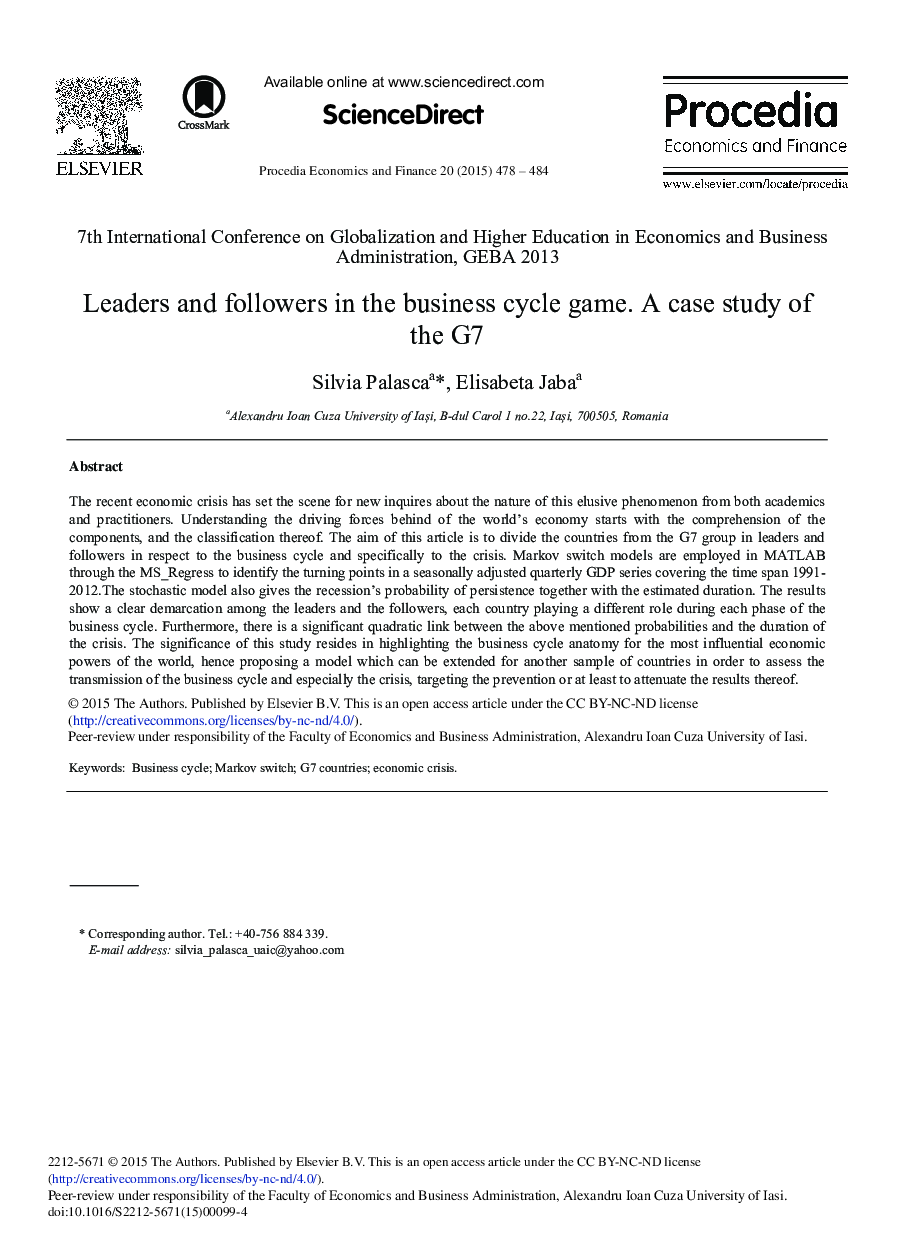| Article ID | Journal | Published Year | Pages | File Type |
|---|---|---|---|---|
| 980176 | Procedia Economics and Finance | 2015 | 7 Pages |
The recent economic crisis has set the scene for new inquires about the nature of this elusive phenomenon from both academics and practitioners. Understanding the driving forces behind of the world's economy starts with the comprehension of the components, and the classification thereof. The aim of this article is to divide the countries from the G7 group in leaders and followers in respect to the business cycle and specifically to the crisis. Markov switch models are employed in MATLAB through the MS_Regress to identify the turning points in a seasonally adjusted quarterly GDP series covering the time span 1991-2012. The stochastic model also gives the recession's probability of persistence together with the estimated duration. The results show a clear demarcation among the leaders and the followers, each country playing a different role during each phase of the business cycle. Furthermore, there is a significant quadratic link between the above mentioned probabilities and the duration of the crisis. The significance of this study resides in highlighting the business cycle anatomy for the most influential economic powers of the world, hence proposing a model which can be extended for another sample of countries in order to assess the transmission of the business cycle and especially the crisis, targeting the prevention or at least to attenuate the results thereof.
